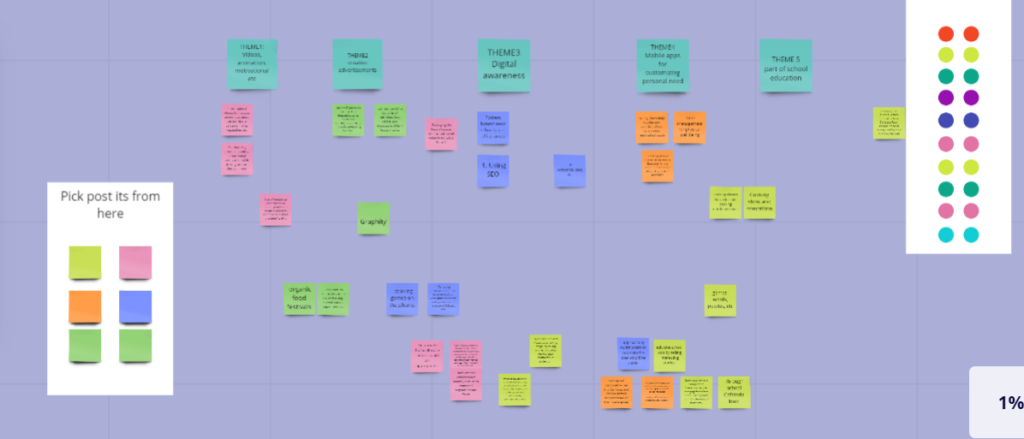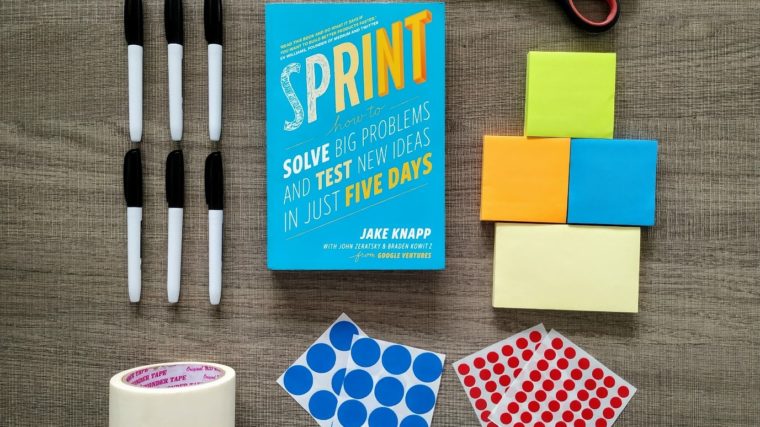Why Design Thinking?
Design Thinking has emerged as an alternative new paradigm to meet better the user needs and solve the ’actual’ challenges. Currently, our society is facing global challenges that might not be possible to solve through a traditional or linear mindset. Problems such as social systems, climate change, political systems, etc are the wicked problems of the society and require to be solved with more empathy and with a focus on the end-users. Design thinking is a problem-solving process that prioritizes customer’s needs above other factors (Tuttle, 2021). It relies on the information that is accumulated by observing people’s interactions with a product, services, their environments and so on. It involves observing with empathy and employs a hands-on iterative approach to creating innovative solutions. To introduce Design Thinking practically to the students, Muova conducted a Design Thinking workshop using interactive platform and tools.
How was it executed?
The workshop was conducted virtually and Muova introduced the platform Miro Real-time board to conduct the activities in an interesting and motivating way for the participants. The activities were planned in a way that they demanded the participation of the students in the groups which also led to increased collaboration amongst students, exchange of ideas and helped them to understand the power of team activities.
Workshop goals:
The workshop aimed to make the participants experience the end to end process of solving a problem through a design thinking approach with a real-life example that can relate to. The following were the Design Thinking stages that were explained in the workshop through a coherent activity and example that ran across all the stages and students were able to follow the process step by step. Mentioned below are the 5 phases of the Design Thinking process:

Workshop process:
As the workshop was planned to conduct in groups, it started with an icebreaking activity which helped participants to know each other and they would be able to communicate with each other for further activities.
The Design Thinking phases of Empathize, Define, Ideate, Prototype, Test was adapted in a way that they can be performed in the short duration of 3 hours.
Empathize: Conduct a short talk/interview
Participants were supposed to have a conversation with a user asking them about their journey /experience of using the particular object/service that they might be using in their daily lives.
Define: Find opportunities or specific pain points in their experience
After talking to the user, the next step was for them to identify the places where the problem is found and which they would be interested in solving during the workshop.
Ideate: Come up with ideas
In this stage, the aim was to for them to come up with a variety of ideas to tackle the selected problem area.
Prototype: Finalise idea
Here, the participants finalised one idea from the multiple ones that they had created and added details to develop the idea further. For example, explaining features, functions, and so on.
Test: Present the idea to others
Ideas would be presented to the other groups and they would give some feedback for the proposed solution. This feedback would be useful for them to modify their solution if needed.
Workshop outcomes:
The workshop stages and activities provided students with space and tools where they could think expand their thought processes and push themselves to think deeper. The workshop was facilitated in a way that students were encouraged to think using a different lens and combine each other,s ideas to come up with an innovative solution.
In this workshop of almost 3 hours, participants came with the concept of ’NutriGuide’ where they intend to make a product for making a healthy lifestyle more accessible to everyone. Starting with identifying which problem to solve, and conducting various activities at different stages, to arriving at the final concept and its proposal, the workshop offered an opportunity to create an end to end solution to a problem with a Human-centered approach

Tips on facilitating your virtual Design workshop!
Are you interested in conducting your Design Thinking workshop and ignite this new way of thinking in problem-solving? Here are some points that can be helpful:
– Always have workshop goals clear. For example, what do you want to achieve from the workshop?
– If you are using any new platform, such as the Miro Realtime board, keep in mind to inform the participants beforehand to sign in to the platform. In the workshop, have 10 minutes to explain the interface of the software.
– Always have a plan B. In some cases, if time is not enough and participants are not able to follow the activities, have an alternate way to progress in the workshop.
- Where teams get work done: https://miro.com/
- More about Innotal project: Projects: InnoTAL (2017-2020) | Muova




